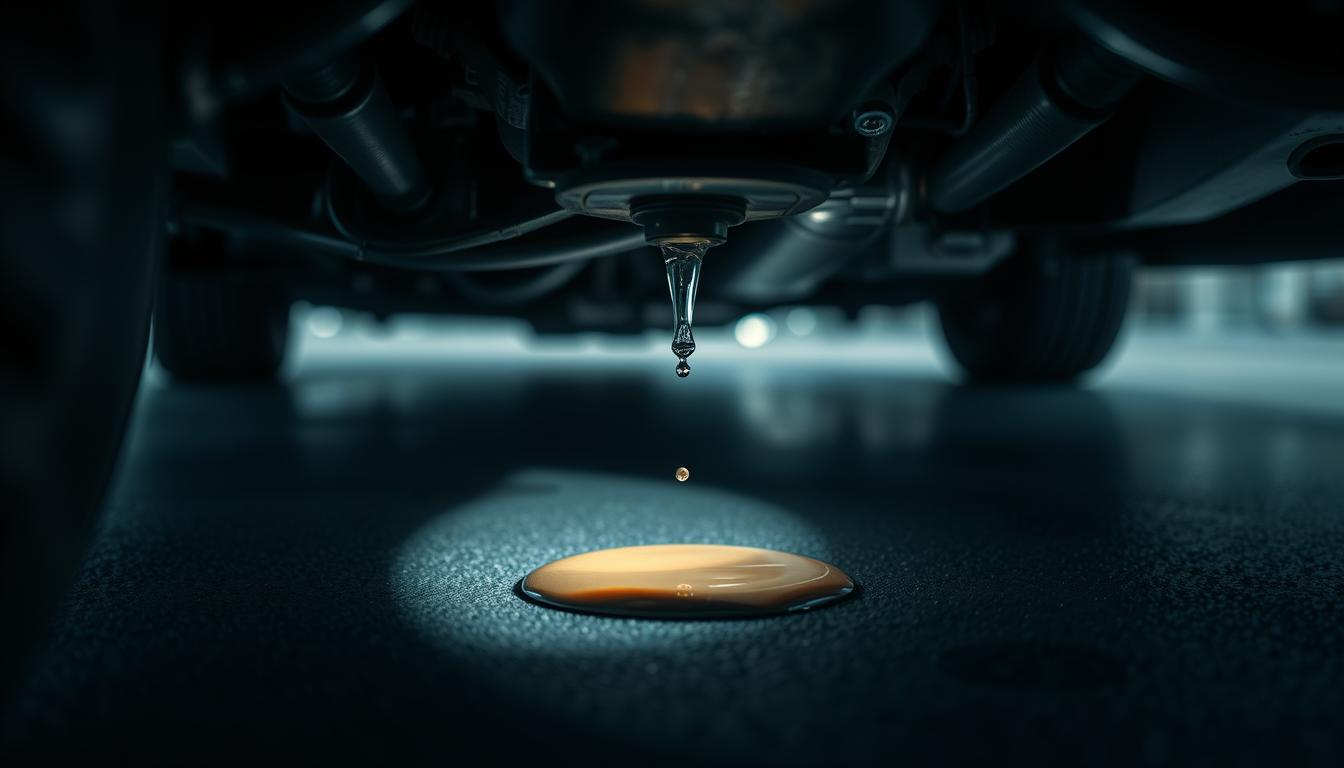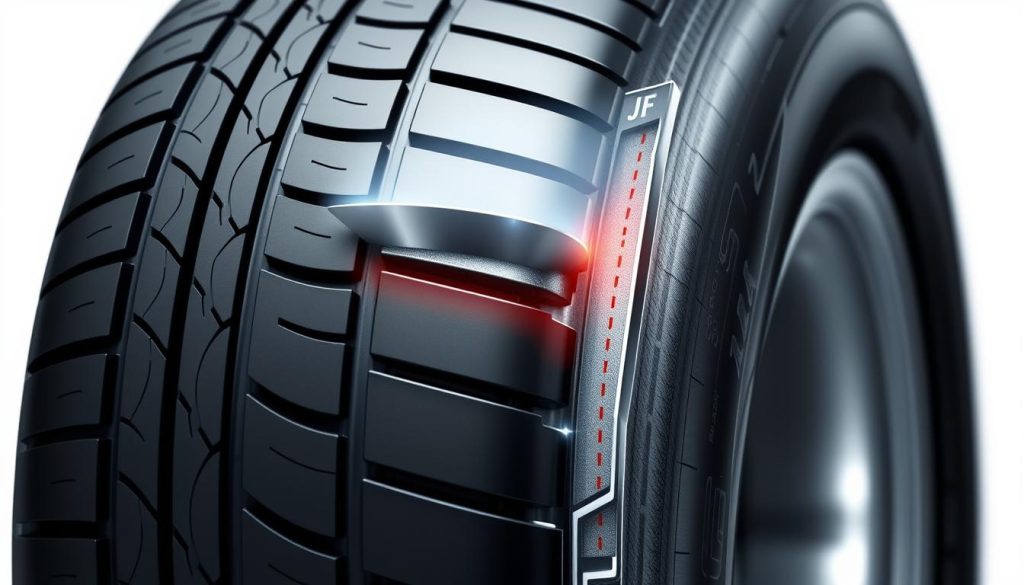Discovering a mysterious wet spot where your vehicle was parked can make any driver uneasy. While some drips are harmless, others signal urgent car issues needing immediate attention. At Heaven Automotive, we help drivers decode these signs to protect their vehicle and safety.
Automotive systems use multiple fluids, each with unique colors and textures. A clear puddle under the front might just be condensation from the AC. But sticky green liquid near the engine? That could point to coolant problems. Learning to spot these differences helps you act fast—or avoid unnecessary panic.
Ignoring certain leaks risks costly damage. For example, transmission fluid leaks often leave reddish stains and worsen shifting performance. Brake fluid has a slippery feel and amber hue, while oil appears dark brown. Letting these go unchecked might lead to engine failure or unsafe driving conditions.
When in doubt, consult professionals. Our team at Heaven Automotive uses advanced diagnostics to pinpoint leaks quickly. We’ll explain your options clearly and prioritize repairs that keep your car running smoothly. Don’t let uncertainty turn a small drip into a major headache—schedule an inspection today.
Key Takeaways
- Not every puddle under your vehicle indicates a severe problem
- Fluid color, texture, and location help identify the source
- Coolant leaks often appear green, while oil is typically dark brown
- Ignoring brake or transmission fluid leaks can create safety risks
- Professional diagnosis prevents unnecessary repairs and costs
Introduction to Fluid Leaks Under Your Car
Your vehicle’s performance depends on a network of specialized liquids working together. When components wear out or face harsh conditions, fluid leaks can develop. Understanding these issues helps you address them before they escalate.
Why Fluid Leaks Occur
Most leaks start small. Rubber seals shrink with age, especially in high-mileage cars. Metal parts expand and contract during temperature swings, creating gaps. Road salt and debris speed up corrosion in engine compartments and undercarriages.
Common trouble spots include:
- Cracked plastic reservoirs
- Loose hose clamps
- Worn transmission pan gaskets
Overview of Common Leaks and Their Impact
Each vehicle system uses specific fluids. Power steering fluid leaks make turning difficult. Low coolant causes overheating. A single leak often hints at wider issues—like a failing water pump causing multiple drips.
Ignoring these problems risks damage to expensive parts. For example, brake fluid loss reduces stopping power. Transmission fluid leaks lead to gear slippage. Early detection saves repair costs and keeps your car safe on the road.
Identifying Fluid Leaks by Color and Location
Decoding automotive drips starts with two clues: color and where they appear. These factors help distinguish routine condensation from critical system failures. Let’s break down what to look for when inspecting your parking spot.
Interpreting Coolant, Oil, and Transmission Fluid Colors
Coolant stands out with its vibrant hues. Though often green or yellow, modern formulas can be pink, orange, or clear. Its sweet odor and slippery texture separate it from water. Touch a drop—if it feels slimy, your radiator might need attention.
Engine oil darkens as it ages. Fresh oil is amber, but leaks usually show as thick brown or black liquid with a petroleum smell. Transmission fluid starts bright red and turns brownish-red over time. Both leave distinct stains—transmission fluid feels thinner than engine oil.
Spotting Leaks Near the Front, Middle, or Rear of Your Vehicle
Location matters as much as color. Front-end drips often come from the engine, radiator, or power steering. Middle-section leaks might signal transmission issues. Rear puddles? Check differential or fuel system components.
Red liquid under the front wheels usually means power steering trouble. The same fluid near the vehicle’s center suggests transmission concerns. Blue drips with a soapy feel typically come from windshield washer reservoirs—less urgent but worth refilling.
Leaking Fluids: Main Concerns and Safety Risks
Spotting an unexpected puddle beneath your car demands quick action. While some moisture might be harmless, specific leaks create immediate safety threats requiring urgent attention. Let’s examine which issues put drivers at greatest risk.
Risks of Ignoring a Fluid Leak
A brake fluid leak ranks as the most dangerous problem. This vital liquid transfers pedal pressure to your brakes. Even small losses can cause sudden failure when stopping. Imagine approaching a red light with no response—this nightmare scenario becomes real when brake systems lose fluid.
Power steering failures develop more gradually but remain hazardous. Stiff steering wheels make avoiding obstacles difficult. Parallel parking becomes risky when you can’t turn smoothly. These issues worsen in wet weather or heavy traffic.
Immediate Safety Measures to Consider
If you smell gasoline or see rainbow-colored puddles, do not drive. These signs indicate fuel system leaks that could spark fires. For other fluids:
- Check dashboard warning lights immediately
- Park on level ground and inspect fluid levels
- Contact our Heaven Automotive team for same-day diagnostics
Coolant and oil leaks demand swift repairs too. Low coolant overheats engines within miles. Insufficient oil grinds metal parts together. Both situations cause irreversible damage costing thousands to fix. Don’t gamble with your vehicle’s health—proactive care prevents disasters.
How to Diagnose a Fluid Leak in Your Vehicle
Finding liquid under your car doesn’t have to be a guessing game. We’ll guide you through simple checks to identify issues early. Start with these practical steps—and know when to call our experts for backup.

Step-by-Step Visual Inspection
Grab a flashlight and white cardboard. Park on level ground overnight with the cardboard beneath your vehicle. Morning reveals drip patterns—their color and position hint at the source. Look for shiny streaks on parts like hoses or the oil pan.
Check under the hood next. Stains around the reservoir caps or cracked tubes often explain leaks. A sweet smell near the radiator? That’s likely coolant. Greasy spots under the engine usually mean oil issues.
Checking Fluid Levels and Consistencies
Compare your findings to fluid levels in these key areas:
- Engine oil dipstick
- Coolant overflow tank
- Brake fluid reservoir
Low levels confirm a problem. Rub leaked liquid between your fingers—thick brown suggests old oil. Slippery green? Probably antifreeze. Gasoline evaporates quickly but leaves a strong smell.
Tools and Techniques for Accurate Diagnosis
For tricky cases, use UV dye added to your oil or coolant. Drive briefly, then shine a blacklight to spot the leak’s origin. Pressure testers find weak seals in cooling systems.
When multiple systems show low fluid levels, or you notice brake pedal issues, visit our mechanic team immediately. Complex leaks demand professional gear—we pinpoint problems fast to prevent bigger repairs.
Preventative Maintenance and Repair Strategies
Preventing leaks costs less than fixing breakdowns—and keeps your vehicle safer. At Heaven Automotive, we help drivers build smart maintenance habits that stop problems before they start. Our approach combines DIY checks with professional expertise for complete protection.
Regular Checks to Avoid Major Issues
Consistent monitoring catches small issues early. Follow this simple routine:
- Check fluid levels monthly (oil, coolant, brake, power steering, transmission)
- Inspect hoses and seals during every oil change
- Replace worn gaskets before they fail completely
High-mileage cars need extra attention. Rubber seals harden over time, especially near the radiator and transmission. Using manufacturer-approved fluids prevents corrosion in sensitive systems.
When It’s Time to Visit an Automotive Expert
Don’t ignore these red flags:
- Power steering whines when turning
- Transmission slips between gears
- Dashboard lights flash for oil pressure or temperature
Our technicians use pressure tests and UV dyes to find hidden oil leaks. Catching a power steering issue early can save $1,200+ in pump replacements. Schedule inspections every 6 months or 5,000 miles—we’ll keep your car running smoothly without surprises.
Additional Tips for Car Owners from Industry Experts
Understanding when to grab a wrench or call a pro saves time and money. While some vehicle issues have simple solutions, others demand specialized skills. We’ll help you navigate these decisions confidently.

DIY vs. Professional Repairs: What You Need to Know
Basic maintenance can often stop minor drips. Tightening loose hose clamps near the front of your engine might fix a power steering fluid seepage. Replacing a cracked radiator cap could resolve coolant overflow issues temporarily.
Consider these DIY-friendly tasks:
- Topping off low transmission fluid levels
- Cleaning debris from windshield washer nozzles
- Swapping worn wiper blades causing fluid streaks
Complex systems require expert attention. Power steering fluid leaks often involve high-pressure hoses or failing pumps. Our technicians use pressure tests to pinpoint issues quickly—DIY attempts here risk damaging expensive components.
Watch for these red flags demanding professional care:
- A sweet smell near the engine (possible coolant mixing with oil)
- Transmission fluid pooling under your car’s center
- Steering fluid stains accompanied by whining noises
Persistent transmission fluid loss usually signals internal seal failures. These repairs need precise adjustments only certified shops provide. Similarly, that sweet smell could mean head gasket failure—address it soon possible to prevent engine meltdowns.
At Heaven Automotive, we combine advanced tools with factory-trained expertise. Whether it’s a tricky power steering fluid leak or complex transmission fluid issues, we diagnose problems accurately. Don’t gamble with temporary fixes—schedule an inspection soon possible for lasting solutions.
Conclusion
Every drop tells a story—understanding your vehicle’s leaks protects both your safety and wallet. By recognizing colors, smells, and locations, drivers can distinguish harmless condensation from critical system failures. Quick action prevents minor issues from becoming major repairs.
Not all puddles demand panic. Water under the AC compressor often evaporates harmlessly. But dark brown oil spots or amber brake liquid require immediate attention. These signal potential engine damage or braking weaknesses.
While DIY checks help spot problems, expert technicians provide precise solutions. Modern cars have complex networks where a single leak might indicate multiple issues. Our team at Heaven Automotive uses diagnostic tools to trace sources efficiently.
Regular fluid checks and seal inspections extend your car’s lifespan. Addressing drips early avoids costly part replacements. For example, fixing a worn gasket costs far less than rebuilding overheated components.
Trust our certified mechanics to keep your ride safe. We combine industry knowledge with transparent service—no guesswork, just reliable repairs. Schedule your leak inspection today and drive confidently knowing your vehicle operates at peak performance.



